🎆 Introduction
Every summer, the city of Pamplona in northern Spain awakens to one of the world’s most exhilarating celebrations: the San Fermín Festival. Beyond the thrilling Running of the Bulls, this nine-day event is a tapestry of history, religion, music, and communal joy, where locals and international visitors come together in a spectacular display of Basque and Navarrese culture.
From the Chupinazo firework that ignites the streets on July 6 to the poignant Pobre de Mí farewell song on July 14, the city pulses with energy, color, and tradition. Streets echo with giant parade figures, live music, and dancing, while bullfights honor centuries-old customs. Participating in or witnessing San Fermín is not just a tourist activity — it is an immersion into the living heritage of Spain, where adrenaline, devotion, and festivity intertwine in a singular experience.
Whether you are a thrill-seeker ready to face the bulls, a culture enthusiast, or a traveler eager to witness the spectacle of human courage and celebration, Pamplona during San Fermín promises memories that will last a lifetime.
Table of Contents
Toggle📜 Origins and History
The San Fermín Festival traces its roots to the Middle Ages, originally a religious feast in honor of San Fermín, the patron saint of Pamplona and Navarre. Over time, this sacred celebration blended with street fairs, bullfighting, and cultural events, forming the modern festival known worldwide.
The festival officially begins at noon on July 6 with the Chupinazo, a cannon-like firework shot from Pamplona’s City Hall. Nine days of festivities follow, culminating on July 14 with Pobre de Mí, a heartfelt farewell sung by thousands of participants holding candles — a moment charged with emotion, reflection, and unity
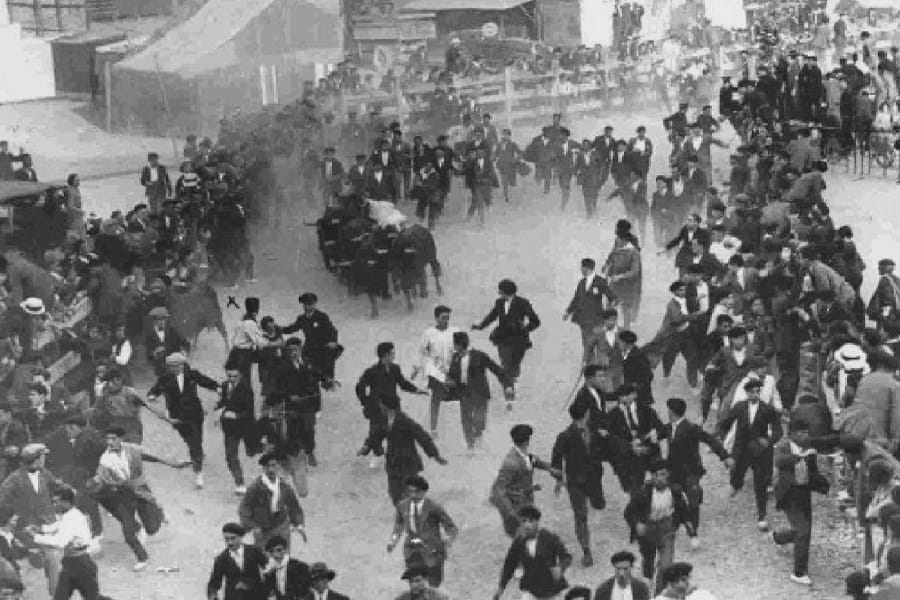
🐂 The Running of the Bulls (Encierro)
The Encierro is the festival’s most iconic event, held daily at 8:00 a.m. from July 7–14.
The run spans 875 meters through the historic streets of Pamplona, finishing at the bullring.
Participants, dressed in the traditional white attire with red scarves, dash alongside six bulls and six steers.
Though lasting only a few minutes, it delivers unmatched adrenaline and danger, attracting thrill-seekers and spectators globally.
⚠️ Safety Note: Participation is voluntary but highly risky. Injuries are common, and all safety rules must be strictly followed
🎉 Traditions and Festivities Beyond the Bulls
While the Running of the Bulls dominates attention, San Fermín offers a rich variety of cultural experiences:
Religious processions honoring San Fermín.
Parades of gigantes y cabezudos — towering figures and whimsical big-headed characters that delight crowds.
Daily evening bullfights, maintaining historical continuity.
Street music, dance, and nightly fireworks, filling every plaza with life.
A festive atmosphere where locals and visitors mingle, eat, and celebrate together.
These events reflect the vitality of Pamplona’s culture, making San Fermín much more than a spectacle — it is a living expression of community and tradition
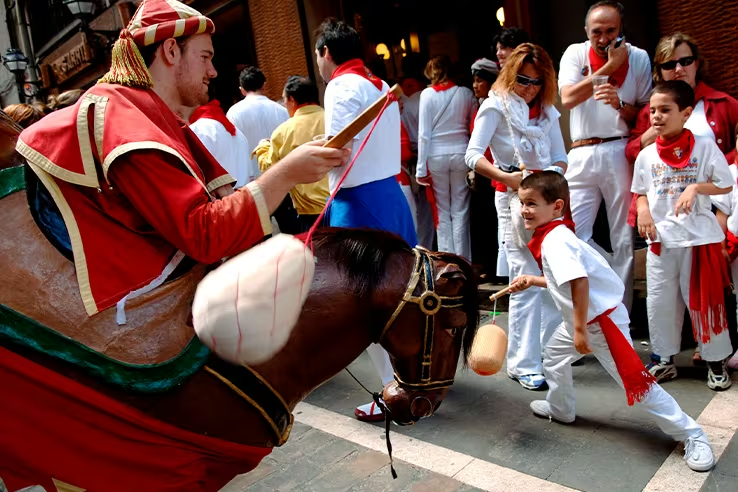
🌍 Cultural Significance
San Fermín is a symbol of Spanish identity and Navarrese heritage. Its fame spread globally thanks to Ernest Hemingway, whose novel The Sun Also Rises (1926) immortalized the intensity and drama of the festival.
The festival embodies the Basque and Navarrese spirit: courage, devotion, celebration, and communal pride. Beyond the thrill, it is a cultural ritual that connects generations and preserves centuries-old traditions
💡 Insider Tips for Visitors
Book early: Pamplona fills up months in advance during San Fermín. Reserve hotels, hostels, or Airbnb well ahead to avoid last-minute stress. Consider staying slightly outside the old town for quieter nights and easier access.
Best viewing spots for Encierro: To safely watch the Running of the Bulls, arrive early in the morning. Popular spots include Santo Domingo Street and near the bullring (Plaza de Toros). Avoid corners where bulls turn sharply if you are on foot.
Traditional attire: Wear the white outfit with a red scarf and sash. It’s not just tradition — it also makes you part of the festival visually and culturally. Comfortable shoes are a must, especially for walking the cobbled streets.
Pintxos & local dining: Explore Plaza del Castillo and Calle Estafeta for pintxos bars, but venture off the main streets for more authentic and less crowded spots. Try local specialties like Txistorra, Chistorra sandwiches, and Navarrese wines.
Stay safe and hydrated: Even if you’re not running with the bulls, streets can get very crowded. Keep water, sunscreen, and a small backpack. Know the emergency exits and follow police and festival marshals’ instructions.
Capture the moments carefully: Photography is encouraged, but be aware of your surroundings, especially near the Encierro route. Avoid standing in dangerous zones, and use zoom lenses for better shots from a safe distance.
Festival schedule & apps: Download official San Fermín apps or follow Pamplona tourism social media for live updates, schedules, and emergency notices. It helps you plan your day around parades, fireworks, and music events.
Engage with locals respectfully: Learn a few Basque phrases like “Kaixo” (hello) or “Eskerrik asko” (thank you). Respect traditions, especially during religious processions. Locals appreciate curiosity mixed with politeness.
Plan breaks: With continuous festivities, it’s easy to get exhausted. Schedule time for a quiet coffee, a stroll in a plaza, or a mid-day siesta to recharge before evening events
🛠️ Practical Information for Visitors
Dates: July 6–14 annually.
Location: Pamplona, Navarre, northern Spain.
Getting There: Accessible via Pamplona Airport (PNA), trains from Madrid/Barcelona, and buses.
Local Transport: Walking is best in the old town during the festival; taxis and buses are available for longer trips.
🌅 Conclusion
The San Fermín Festival is more than an adrenaline rush — it is a living, breathing celebration of history, courage, and communal joy. From the heart-stopping Encierro to the colorful parades, from candlelit farewells to nightly fireworks, Pamplona becomes a city where tradition and modernity dance together in harmony.
Visiting San Fermín is a journey into the soul of Navarre and the Basque spirit — an experience that transcends tourism. It is a festival you don’t just attend, but one you feel, remember, and carry with you long after the last firework fades
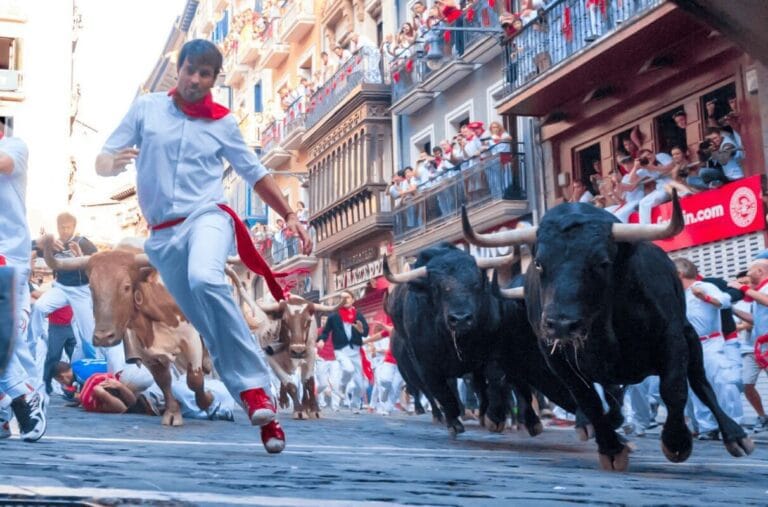
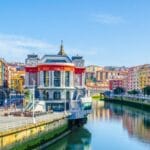
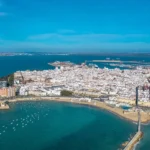
[…] San Fermín Festival (Pamplona) […]